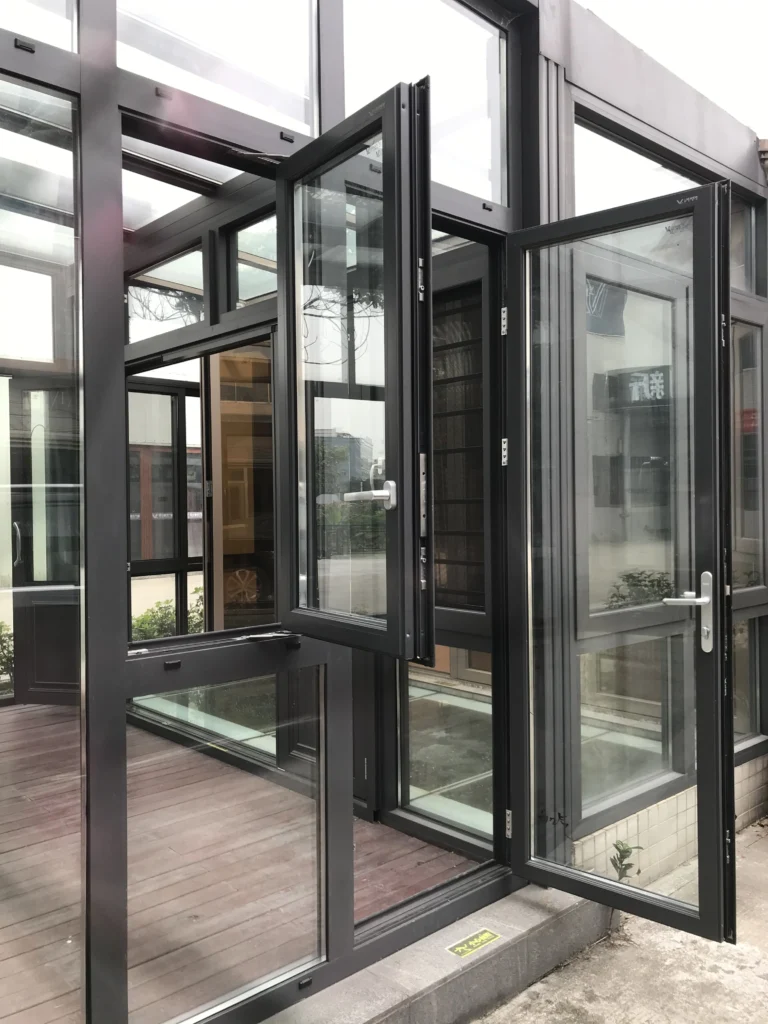Aluminum alloy window hinge are an essential component of modern aluminum windows, directly affecting the smooth operation and service life of the windows. Proper installation and scientific maintenance not only ensure optimal window performance but also significantly reduce future repair costs. This article provides a detailed explanation of the installation steps, common troubleshooting methods, and maintenance tips for aluminum alloy window hinges, helping you easily handle all your usage needs.

1. Introduction to Aluminum Alloy Window Hinges
Aluminum alloy window hinges are made from high-strength aluminum alloy material, featuring lightweight, rust and corrosion resistance, high strength, and attractive appearance. High-quality hinges ensure smooth opening and closing of window sashes, enhancing the overall quality of doors and windows. Installation quality and ongoing maintenance are key to guaranteeing proper hinge function.
2. Detailed Installation Steps for Aluminum Alloy Window Hinges
1. Preparation and Tools
- Tools: Electric drill (with suitable drill bits), screwdriver, tape measure, level, pencil or marker
- Materials: Aluminum alloy window hinges, matching screws, spare screws
2. Confirm Hinge Model and Installation Position
Select the appropriate size and type of aluminum alloy window hinge based on the window frame dimensions and sash weight. Typically, 2-3 hinges are recommended per sash, adjusted according to window height and weight. Mark the exact installation positions on the frame and sash to ensure symmetry and ease of opening.
3. Pre-assembly and Positioning
Place the hinge in the predetermined position and use a pencil to mark the drilling points. Ensure the hinge fits tightly against the window frame and sash with accurate positioning.
4. Drilling and Fixing the Hinges
Use the electric drill to pre-drill holes matching the screw size to prevent debris from clogging the threads. First, fix the hinge on the window frame side, then on the sash side. Tighten the screws moderately to avoid deforming the hinge or damaging the frame.
5. Post-installation Adjustment
Use a level to check the vertical and horizontal alignment of the sash. Adjust the hinge position to ensure the sash opens smoothly without sticking or wobbling. For adjustable hinges, make fine adjustments according to the instruction manual.
6. Functional Testing
Open and close the sash multiple times to check the firmness of the hinge fixing. Check for abnormal noises or looseness to ensure installation quality.
3. Maintenance Tips for Aluminum Alloy Window Hinges
1. Regular Inspection and Screw Tightening
Inspect hinge screws every 3-6 months and tighten them appropriately to prevent sash wobbling and hinge damage caused by loosening.
2. Cleaning the Hinges
Use a soft cloth to remove dust, dirt, and debris from the hinge surface. Avoid harsh acidic or alkaline cleaners that may corrode the aluminum alloy surface.
3. Lubrication and Care
Apply a moderate amount of lubricant (such as machine oil or silicone oil) to the hinge pivot points. Lubrication reduces friction noise and extends hinge service life. It is recommended to lubricate every six months, especially after rainy seasons.
4. Anti-rust and Corrosion Treatment
Although aluminum alloy is corrosion-resistant, surface paint or anodized layers can be damaged, causing corrosion. Regularly check the surface condition and repair damaged coatings promptly. Use professional anti-rust agents for protection, especially in coastal or humid environments.
5. Hinge Replacement and Repair
If the hinge is severely deformed, cracked, or cannot be repaired, replace it promptly. Choose the same specification and model as the original hinge to ensure compatibility. Replacement follows similar steps to installation—ensure safe operation and maintain frame integrity.
4. Common Issues and Solutions
| Issue | Cause | Solution |
|---|---|---|
| Loose hinges | Loose screws or hinge deformation | Tighten screws or replace hinges |
| Noise when opening | Lack of lubrication, dust buildup | Clean hinges and apply lubricant |
| Difficult sash opening | Incorrect hinge installation or deformation | Re-adjust hinge position or replace hinge |
| Rust on hinge surface | Coating damage or humid environment | Repair surface coating, apply anti-rust treatment |
5. Practical Tips to Extend Aluminum Alloy Window Hinge Life
- Choose the correct hinge model to avoid overload during installation
- Maintain regularly by keeping hinges clean and lubricated
- Avoid forceful window operation to reduce mechanical damage
- Address abnormalities promptly to prevent worsening problems
6. Conclusion
As a key component of windows, the installation quality and maintenance status of aluminum alloy window hinges directly affect window usability and lifespan. Mastering scientific installation steps and maintenance methods can not only ensure window safety and stability but also save on long-term repair costs. Contact us for more professional product support and after-sales service.
